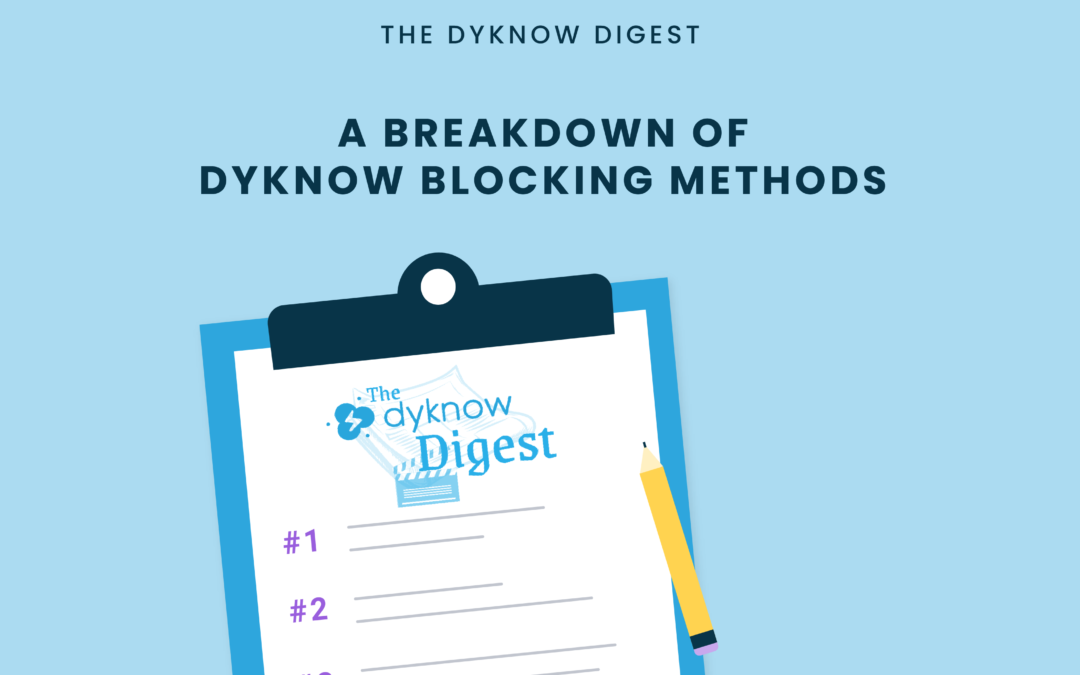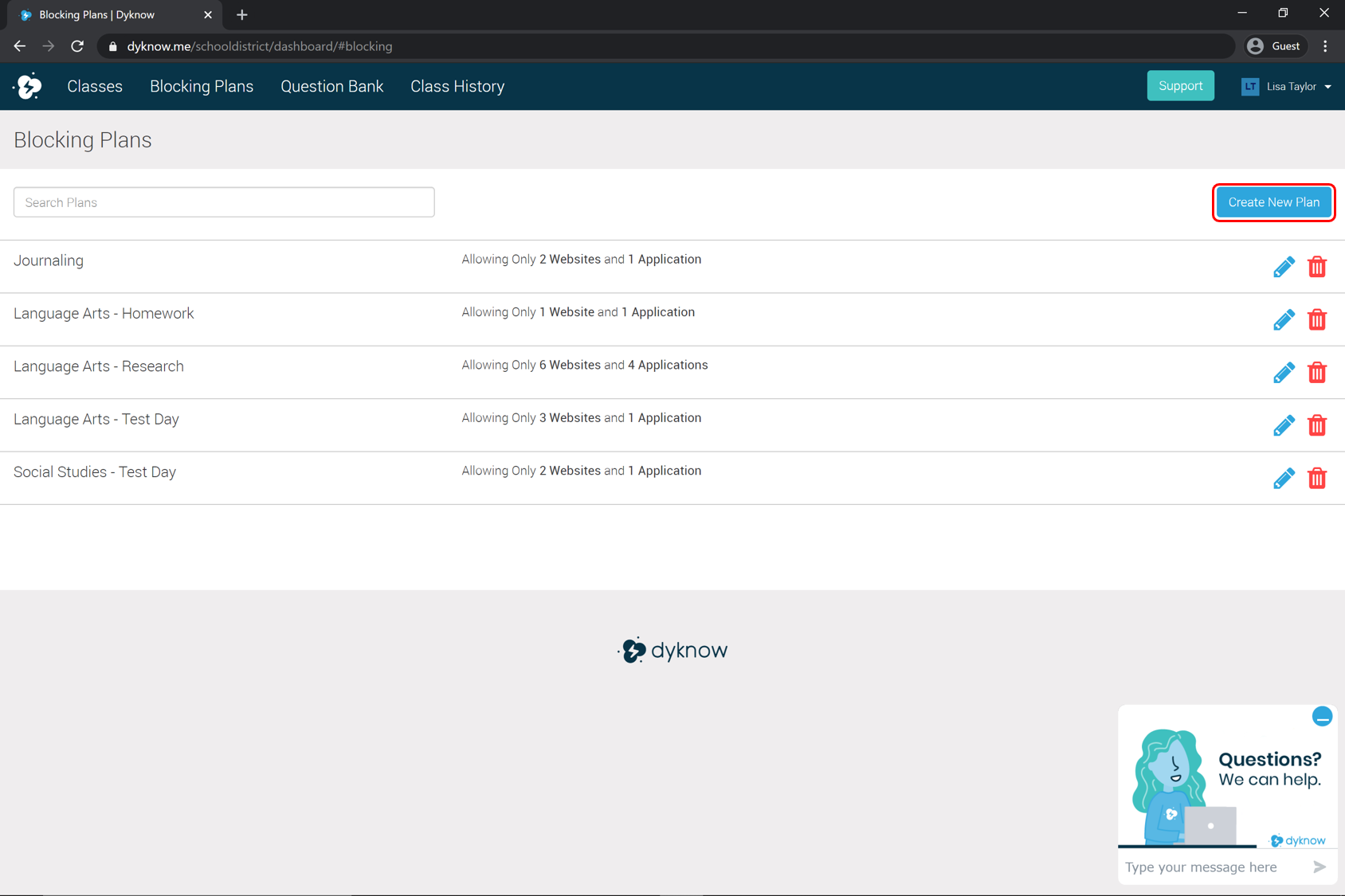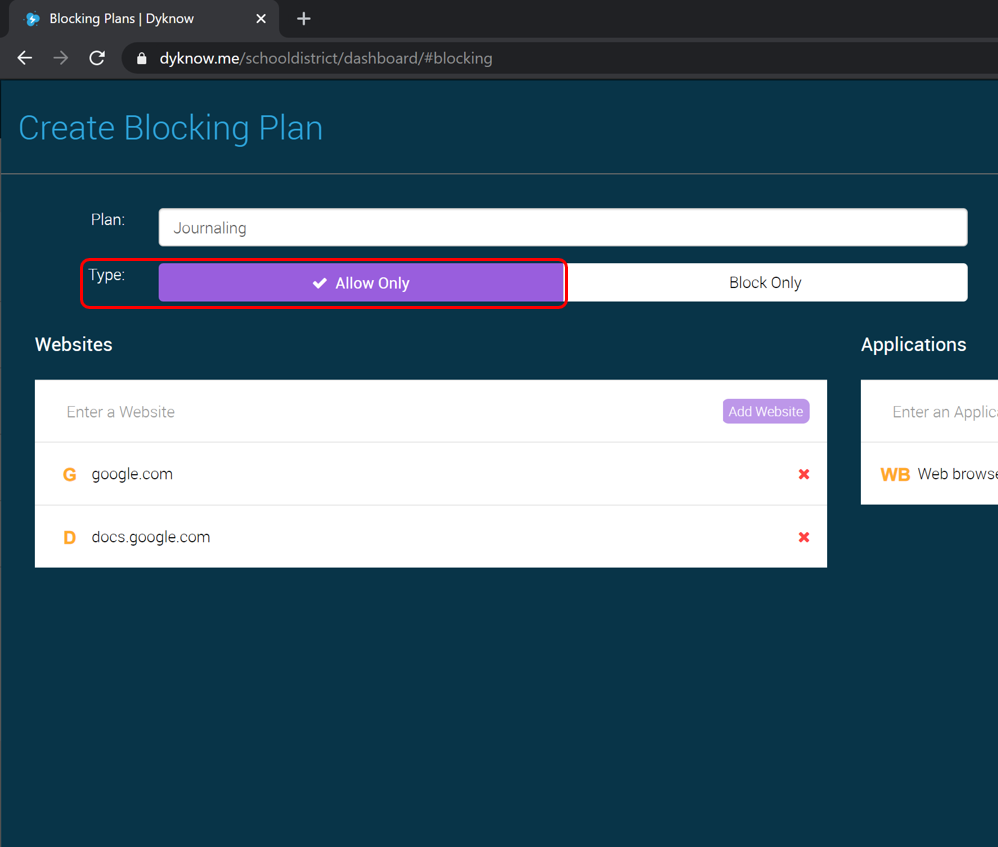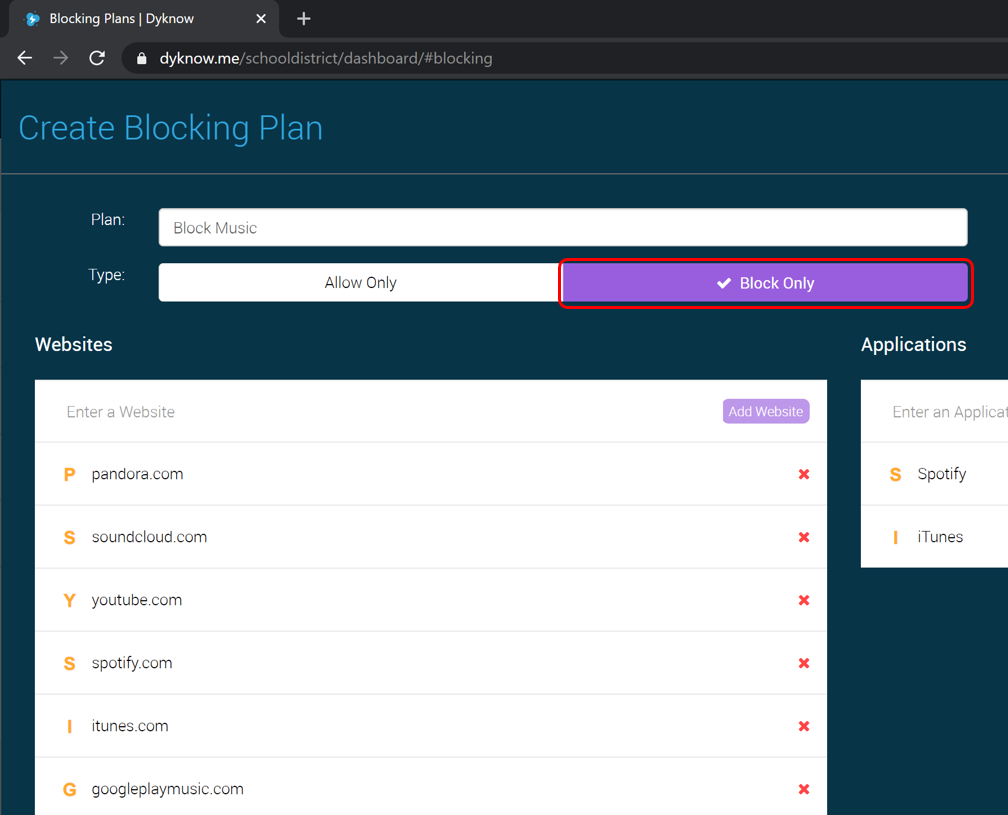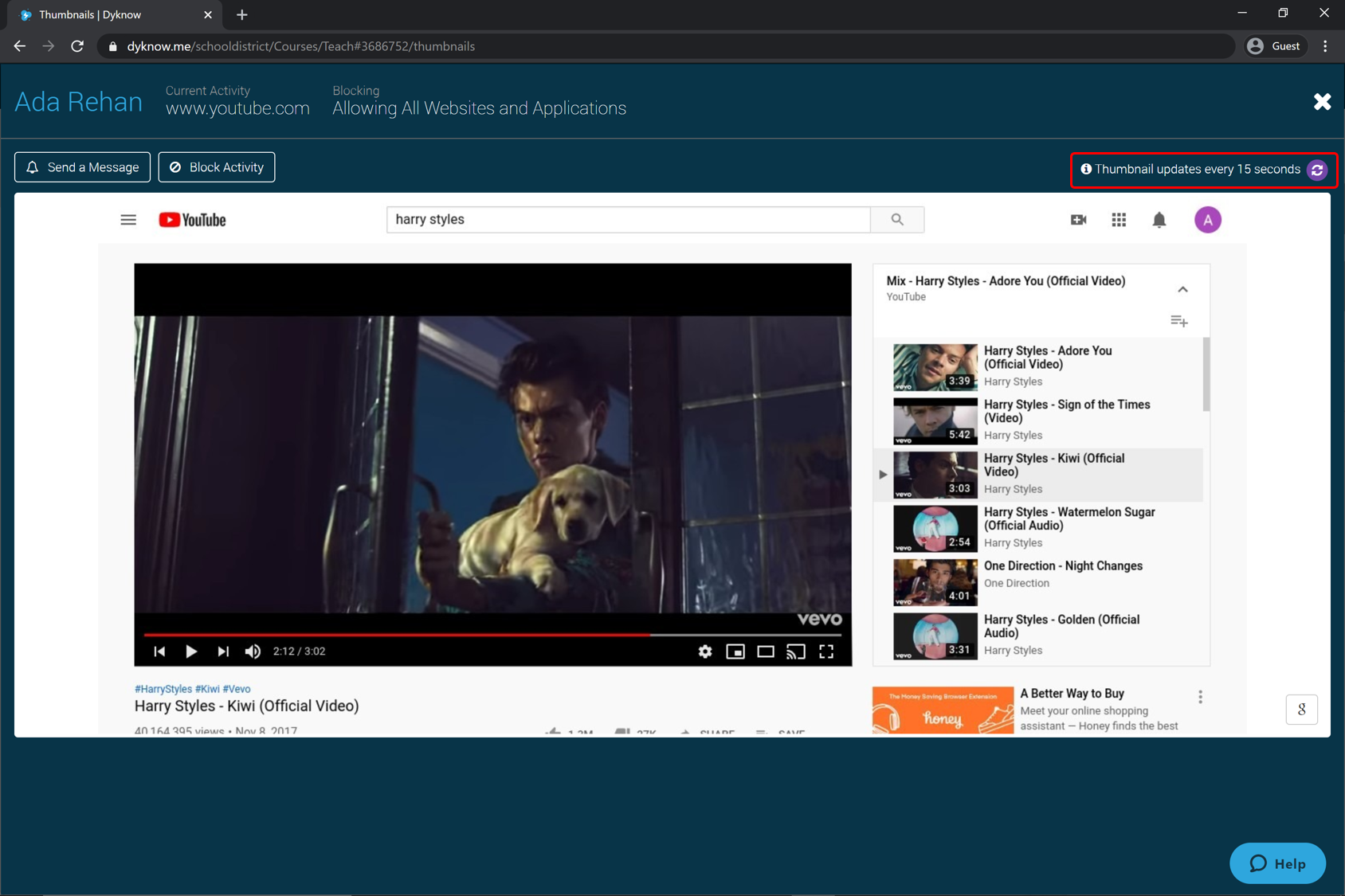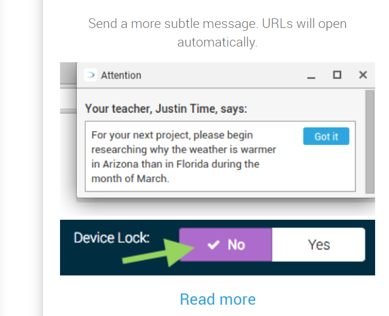Remote and hybrid learning has increased students’ access to off-task websites and apps while learning outside the classroom. In turn, this has increased the need for K-12 educators to be able to block these websites and apps during class time to ensure students are on task and learning effectively.
This week on The Dyknow Digest, we’re answering a question submitted by Shannon McFarland and breaking down the 3 primary blocking methods that teachers can use in Dyknow, as well as sharing how teachers can leverage the “Got It” button in Dyknow’s messaging feature. Not a Dyknow user? Start Your Free Trial Today!
The Question:
“I would love to see a video tutorial of the different blocking methods! I also saw a teacher send a message to a kid and the kid needed to click a ‘got it’ button but I haven’t figured out how to do it myself.“
– Shannon McFarland
How To Use Dyknow Blocking Methods
Utilizing Blocking Methods within Dyknow is one of the most effective ways to ensure students are on task and learning effectively during class time. With Dyknow’s various blocking methods, teachers have the ability to set up specific blocking plans before, during, or after class, block off-task activity on the spot, and save blocking plans for future use.
This article will outline how teachers can create “Allow Only” and “Block Only” blocking plans in Dyknow and save these blocking plans, as well as blocking sites and apps on the spot. This article will also cover how to use the “Got It” button within Dyknow’s messaging feature.
Create and Save Blocking Plans
There are two primary blocking plans within Dyknow: “Allow Only” and “Block Only.” To create a new blocking plan, teachers need only to log in to Dyknow and navigate to the “Blocking Plans” tab. Once there, teachers can view previously saved blocking plans as well as create new ones. If teachers would like to create a new blocking plan, they should click the “Create New Plan” button and enter a name for the blocking plan. The next step is to decide if you want to create an “Allow Only” or a “Block Only” plan.
“Allow Only” Blocking Plans
Dyknow’s “Allow Only” blocking plan option enables teachers to create a blocking plan in which they only allow certain sites to be accessed. This is the most restrictive of the blocking plan options, as it limits students to only access the websites and apps that have been selected as appropriate for that class session. Many Dyknow teachers will use “Allow Only” blocking plans for writing activities, testing, and quizzes.
To finish creating an “Allow Only” blocking plan, simply click the “Allow Only” button and select the websites and apps that you would like to allow for that class period. Once your blocking plan is created, click “Save” and enforce it during class.
“Block Only” Blocking Plans
The “Block Only” option in Dyknow enables teachers to create a blocking plan in which they choose to block specific websites and apps for that class period, but anything outside of those blocked sites will be accessible. This blocking plan gives students more freedom as they will have access to more websites and apps throughout the class period. This blocking plan is a great option if teachers are looking to only block distracting websites like gaming, social media, and entertainment sites.
To finish creating a “Block Only” blocking plan, simply click the “Block Only” button and select the websites and apps that you want to be blocked for that class period. Once the blocking plan is created, click “Save” and enforce it during class.
Block Student Activity on the Spot
Another blocking method within Dyknow is the ability to block sites on the spot during a monitoring session. If teachers have a monitoring session in place – with or without a blocking plan enforced – they can block distracting sites or apps that students are getting to.
To do this, once teachers notice that distracting site, they need only to enlarge that student’s screen into Big View and from there click the “Block Activity” button. This will block that website or app for all students for the rest of the class period unless the teacher removes the site from the blocking plan.
Once you have created a blocking plan – on the spot or in the “Blocking Plans” tab – don’t forget to save it with a unique name. It is useful for teachers to save specific blocking plans for various use cases such as testing, group work, or a specific activity, in order to save time in the future.
Dyknow’s “Got It” Button
The last part of Shannon’s question was regarding the “Got It” button within Dyknow’s messaging feature. This feature is accessible when teachers send a message to one or all students using Dyknow and enables students to dismiss the message once they have seen it, letting the teacher know that they “got it.”
Enabling the “Got It” button in Dyknow
1. Send a custom message to one, all, or a few students
2. Type out your custom message
3. Choose NOT to lock student devices upon sending the message
When students receive your message, it will appear as a notification on their screen with a blue “Got It” button in the right-hand corner, and they can dismiss the message by clicking the “Got It” button.
Remote and hybrid learning have created environments where students have more autonomy over their learning as well as autonomy over the websites and apps that they are visiting and using during class. Dyknow’s various blocking methods enable teachers to ensure that students are using the right sites and apps during class, keeping them on task and learning effectively.
Get Class History for your classroom with Dyknow for free!
Latest blog articles

Dyknow 2021 Year In Review
In addition to web browser updates and bug fixes, Dyknow released several major product updates, new features and enhancements. Check out Dyknow’s 2021 Year in Review!

The Classroom Management Tool that’s Rated #1 in Satisfaction on G2
K-12 Administrators across the world trust G2 as the #1 platform to find, research, and choose EdTech tools that solve the most pressing problems their teachers are experiencing. In G2's Fall 2021 Reports, Dyknow was once again rated #1 in overall Satisfaction out of...

Bringing Diversity and EdTech to the English Classroom
On this episode of Tackling Tech, Tierra Leustig interviews Scott Bayer about being an anti-racist teacher, diversifying reading lists, creating inclusive learning environments, and leveraging ed-tech in non-technical ELA classrooms. Scott Bayer is a High School...

